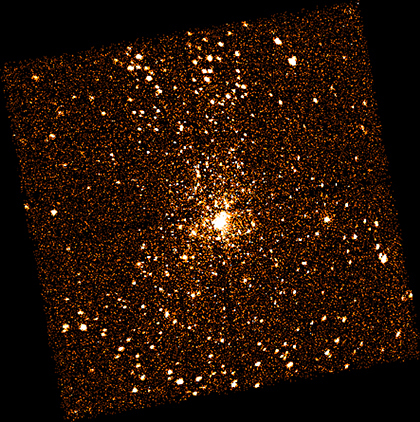Chandra Finds X-ray Star Bonanza in Orion Nebula
Chandra Image of the Orion Nebula Star Cluster. This X-ray image shows about a thousand X-ray emitting young stars in the Orion Nebula star cluster. The X rays are produced in the multimillion degree upper atmospheres of these stars. At a distance of about 1800 light years, this cluster is the closest massive star forming region to Earth. It is well-known in the night sky because it illuminates the Orion Nebula. The region shown in this image is about 10 light years across. The bright stars in the center are part of the Trapezium, an association of very young stars with ages less than a million years. The dark vertical and horizontal lines, and the streaks from the brightest stars are instrumental effects.
|
||||||||||||||||||||||||||||||
An X-ray image of the Orion Nebula, a star cluster located in the constellation Orion, is displayed. The image is dominated by shades of brown and orange, with stars visible in the frame. This X-ray image shows about a thousand X-ray emitting young stars in the Orion Nebula star cluster. The X-rays are produced in the multimillion degree upper atmospheres of these stars. At a distance of about 1800 light years, this cluster is the closest massive star forming region to Earth. The bright stars in the center are part of the Trapezium, an association of very young stars with ages less than a million years. The dark vertical and horizontal lines, and the streaks from the brightest stars are instrumental effects. The Orion Nebula is a well-known celestial object, also known as Messier 42 (M42). The Orion Nebula is one of the brightest and most easily recognizable nebulae in the night sky. It is a large cloud of interstellar gas and dust that is illuminated by young stars within it. The nebula is a popular target for astrophotography and scientific studies.





